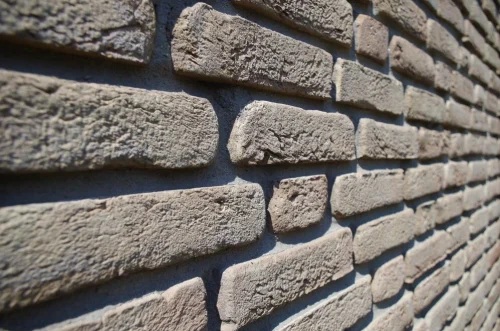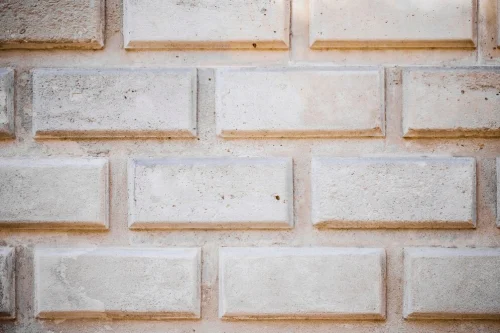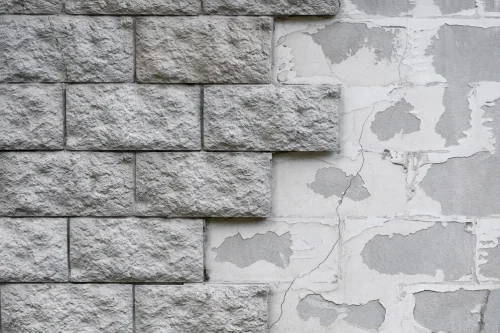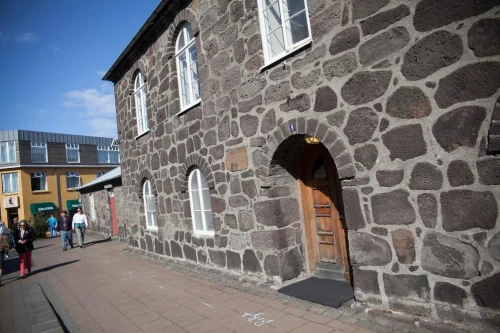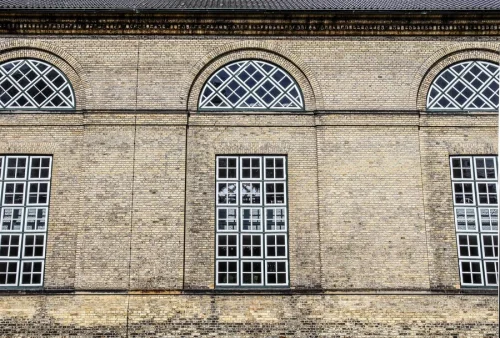
Water Tank Servicing: How to Clean Your Water Tank The Right Way?
April 11, 2025
10 Latest Doors Panel Designs in 2025: Innovation Meets Aesthetics
April 14, 2025Masonry is one of the oldest and most durable building techniques used throughout history to create structures that stand the test of time. Among the many types of masonry, Ashlar Masonry is mostly popular due to its precision and aesthetic appeal. It involves the use of finely cut, rectangular stones that are fitted together without mortar joints, creating a smooth, uniform surface.
Masonry plays an essential part in creating structures that are durable and have a good appearance. Ashlar Masonry has become hugely popular throughout history due to its precision and elegance.
Two prominent variations of Ashlar Masonry are Ashlar Chamfered and Ashlar Fine Masonry. While both are designed to enhance the beauty and strength of buildings, they have unique features that set them apart.
Now, let’s break down their key differences to guide you in selecting the perfect option for your project’s needs.
Table of contents
- What Is Ashlar Chamfered Masonry?
- What Is Ashlar Fine Masonry?
- Understanding the Differences Between Ashlar Chamfered and Ashlar Fine Masonry
- Common Applications for Ashlar Chamfered Masonry and Ashlar Fine Masonry
- What Type of Ashlar Masonry Suits Your Project?
- Conclusion
- Discover GreenFortune - Your Trusted Partner for Top-quality uPVC Windows and Doors
- FAQs
What Is Ashlar Chamfered Masonry?
Ashlar Chamfered Masonry is a process in which stone blocks are cut with beveled edges at 45-degree angles to produce distinctive and visually dynamic features along exposed faces. It provides increased structural durability by preventing sharp corners from chipping or being damaged over time.
This technique gives the stone an interesting visual characteristic. Also, it increases structural longevity by protecting against sharp corners chipping or becoming damaged.
This technique goes beyond functional considerations. It also adds aesthetic elements. Chamfered edges cast subtle shadows on the stone surface, adding depth and texture that flat-cut stones couldn't do. Essentially, it adds "pop" to your construction design.
What Is Ashlar Fine Masonry?
On the opposite end of the spectrum is Ashlar Fine Masonry - an exercise in precision where each stone in this style of masonry is meticulously cut and tooled so as to fit together seamlessly. While their edges are finely dressed so as to form smooth joints, they create a uniform surface and give elegance and sophistication.
Ashlar Fine stands in contrast to Ashlar Chamfered as it emphasizes the perfection of each stone in terms of height, joint width, and alignment. Although labor intensive, Ashlar Fine requires exceptional skill from masons in order to produce its signature flawless finish.
Pro Tip: For projects requiring extreme precision, such as government buildings, monuments, or historical restoration work, Ashlar Fine can be your go-to choice. It will achieve that sleek and polished look you desire.
Understanding the Differences Between Ashlar Chamfered and Ashlar Fine Masonry
Learning about the differences between Ashlar Chamfered and Ashlar Fine masonry can help ensure you choose the appropriate style for your project. Here is a breakdown of their main differences:
Feature | Ashlar Chamfered | Ashlar Fine |
Edge Treatment | Beveled edges, typically at a 45° angle, create a sloped effect | Sharp, clean edges for a uniform, crisp appearance |
Surface Texture | Textured surface with subtle shadows due to chamfered edges | Smooth and polished surface with minimal visible joints |
Construction Complexity | Less labor-intensive, easier to construct compared to fine masonry | Labor-intensive, requires high precision and craftsmanship |
Cost | More budget-friendly due to simpler construction | More expensive due to the detailed work and precision required |
Aesthetic Appeal | Modern, dynamic look with a focus on visual interest | Sleek, refined look that emphasizes uniformity and elegance |
Applications | Modern commercial buildings, feature walls, outdoor landscaping | Government buildings, monuments, historical restorations, classical architecture |
Read more - Plywood vs Engineered Wood
Fun Fact:
Ashlar masonry can be traced back to ancient Egypt and Greece, who first used it for monumental structures like pyramids and temples. Today, this form of construction remains popular for long-lasting buildings that must endure for centuries.
Common Applications for Ashlar Chamfered Masonry and Ashlar Fine Masonry
Ashlar Chamfered and Fine masonry can be utilized in numerous construction projects for aesthetic or functional goals.
Ashlar Chamfered masonry
Modern Commercial Buildings
Ashlar Chamfered masonry's beveled edges and dynamic surface texture make it a popular choice in contemporary office buildings, retail stores, and public spaces.
Feature Walls
Chamfered edges add an attractive element to feature walls in both residential and commercial environments.
Landscaping Projects
Ashlar Chamfered stones are widely used in outdoor landscape designs, particularly garden walls or retaining walls, where both durability and style play an integral role.
Ashlar Fine Masonry
Monuments and Government Buildings
With its smooth, clean finish, Ashlar Fine is perfect for structures that demand refined details - such as government buildings, memorials, and monuments.
Classical Architecture
Ashlar Fine Masonry is ideal for classic-style buildings or any structure requiring a uniform facade.
Restoration Projects
When renovating historical buildings, Ashlar Fine ensures that any new masonry works seamlessly into the original structure.
Fun Fact:
Ancient Rome was an iconic example of Ashlar Fine Masonry, with buildings like the Colosseum featuring precisely cut stones that have endured through millennia of history.
Read more - Apartment vs Independent House
What Type of Ashlar Masonry Suits Your Project?
Selecting either Ashlar Chamfered or Ashlar Fine Masonry depends on several key considerations:
Aesthetic Vision
For a contemporary and stylish appearance, Ashlar Chamfered may offer bold beveled edges that provide an exciting, dynamic edge. But for a uniformly polished appearance, Ashlar Fine may be best.
Budget
Ashlar Fine Masonry will cost more due to the detailed work involved, while Ashlar Chamfered may be more cost-effective when applied to larger projects.
Project Type
First, consider the purpose of your building. For modern office complexes or formal government structures, Ashlar Chamfered may be best. But for historical monuments or more luxurious designs like Ashlar Fine may offer greater sophistication.
Pro Tip:
If you need assistance selecting between different types of masonry, consulting with an architect or builder with experience is best to determine which option meets your design goals, budget, and project specifications. They will be able to advise which option best meets those criteria.
Read more - Builder Floor vs Traditional Apartment
Conclusion
Ashlar Chamfered and Ashlar Fine Masonry are excellent choices for creating lasting, visually striking structures. Ashlar Chamfered features beveled edges for a more contemporary appearance, while Ashlar Fine offers more refined, uniform looks suitable for formal and classic designs.
Understanding their distinct properties allows you to select the masonry style that meets your needs, such as sleek facades, feature walls, or long-term monuments.
Discover GreenFortune - Your Trusted Partner for Top-quality uPVC Windows and Doors
GreenFortune is your go-to solution for providing energy-efficient windows and doors with visual appeal, long-term performance, and premium comfort for your home.
Our windows and doors will add visual appeal and provide long-term performance with premium uPVC solutions made specifically for each application.
Choose GreenFortune now and experience our extraordinary quality, design, and customer service.
FAQs
- Which masonry style is more affordable?
Ashlar Chamfered masonry tends to be more affordable due to its simpler construction, whereas Ashlar Fine requires more detailed craftsmanship, making it costlier. - Can Ashlar Chamfered masonry be used for both indoor and outdoor projects?
Yes, Ashlar Chamfered masonry is versatile and works well for both interior feature walls and outdoor landscaping projects, thanks to its robust design. - Is Ashlar Fine masonry better suited for historical buildings?
Yes, Ashlar Fine masonry is often used in the restoration of historical buildings due to its precise, uniform appearance and ability to blend with classic architectural styles.
4. Which type of Ashlar masonry is best for a modern commercial building?
Ashlar Chamfered masonry is ideal for modern commercial buildings, offering a sleek, contemporary design with textured, beveled edges that stand out.








